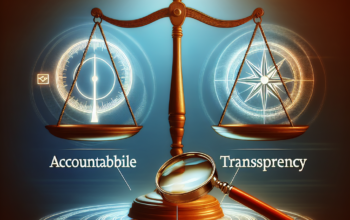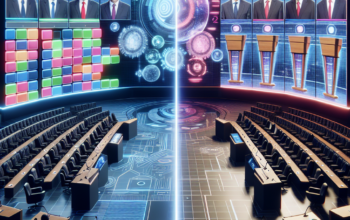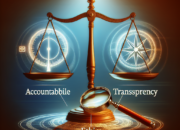Introduction
Climate change policy in the United States has become one of the most divisive issues in contemporary politics. As of 2025, the ongoing debates surrounding climate actions, regulations, and the science behind climate change continue to polarize parties and the public. While the urgency to address climate change has never been clearer, political ideologies often clash, creating significant obstacles to effective and unified policy-making. Understanding the nuances of this contentious debate is essential for recognizing the future trajectory of climate policy in the US.
Understanding Climate Change and Its Impacts
Climate change refers to long-term alterations in temperature, precipitation, wind patterns, and other elements of the Earth’s climate system. These changes are primarily driven by human activities, particularly the burning of fossil fuels like coal, oil, and natural gas, which release greenhouse gases (GHGs) into the atmosphere. The consequences of climate change are profound, including rising sea levels, increased frequency and severity of severe weather events, droughts, and altered agricultural patterns. As we move through 2025, the impacts of climate change are increasingly visible, prompting more urgent discussions about policy interventions.
The scientific community overwhelmingly agrees that immediate action is necessary to mitigate the worst effects of climate change. Reports from the Intergovernmental Panel on Climate Change (IPCC) have stressed that failure to address these threats could result in catastrophic outcomes for both ecosystems and human societies. This alignment among scientists seems to counter the widespread skepticism present in certain political spheres, where climate change is often downplayed or even denied. Such contrasting views directly lead to the divisive nature of climate change policy in US politics.
The Legislative Landscape of Climate Change Policy
The legislative framework around climate change policy in the US has seen significant shifts over the years, particularly with the transition from the Trump administration to Biden’s leadership. President Biden’s administration has made climate change a cornerstone of their agenda, espousing the goal of reaching net-zero greenhouse gas emissions by 2050. Key initiatives under the Biden administration include rejoining the Paris Agreement and launching the “American Jobs Plan,” which allocates substantial funding for clean energy and infrastructure projects. These moves indicate a robust federal commitment to tackle climate change through legislative measures.
However, opposition to these policies persists, particularly from Republican lawmakers and interest groups that advocate for traditional energy sectors such as oil and coal. The backlash often cites concerns regarding economic impacts, job losses, and perceived government overreach in regulating industries. The diverse interests at play can lead to gridlock in Congress, making the implementation of comprehensive climate change policy a significant challenge. As of 2025, pivotal court cases and state-level legislation continue to reflect this partisan divide, complicating the path toward cohesive national climate action.
The Role of Public Opinion in Climate Change Policy
Public opinion plays a crucial role in shaping climate change policy in the US. Surveys indicate that while there is a growing awareness of climate issues among the electorate—especially among younger generations—there remains a stark divide along political lines. A significant portion of Democrats view climate change as an immediate threat, advocating for aggressive action, while many Republicans remain skeptical of climate science, believing that solutions could be economically detrimental. This ideological rift influences how politicians frame climate issues and policy proposals, often resulting in watered-down initiatives or outright rejection of substantial climate legislation.
Furthermore, grassroots movements and advocacy groups have increasingly gained traction and visibility in recent years, pushing climate change to the forefront of public discourse. Organizations like the Sunrise Movement and Extinction Rebellion orchestrate high-profile campaigns, demanding immediate governmental action on climate issues. These movements often mobilize youth, who are particularly concerned about their future in a changing climate. Engaging the public through education and activism has proven to be an effective strategy for influencing policy, yet it simultaneously reinforces the existing divisions within US political landscape.
Economic Considerations in Climate Change Policy
The economic implications of climate change and resultant policies are a prominent topic of debate among policymakers. Advocates for stringent climate measures argue that the short-term costs of transitioning to a green economy are outweighed by the long-term benefits—not only in terms of environmental protection but also through job creation in renewable energy industries. Analysts project a significant demand for jobs in solar, wind, and electric vehicle production, estimating millions of new roles could be created through a robust climate policy.
Conversely, opponents often highlight potential job losses in fossil fuel-dependent areas, warning that a rapid transition could harm local economies. There is concern about “energy equity,” with calls for policies that ensure an equitable transition for communities reliant on traditional energy sectors. Policymakers are increasingly urged to consider economic impacts on all fronts while designing climate policy, necessitating a nuanced approach that marries environmental imperatives with economic realities.
International Climate Agreements and US Responsibility
The United States’ role in global climate agreements has undergone notable vacillations due to its shifting political landscape. After rejoining the Paris Agreement, the US once again committed to reducing its GHG emissions as part of international responsibilities. This is particularly significant as the US is one of the largest historical emitters of GHGs. The interplay between domestic policy and international commitments creates complex dynamics that challenge the formulation of coherent climate strategies.
The diplomatic dimension of climate policy is also pivotal. In 2025, the influence of multilateral negotiations—such as the COP conferences—remains substantial, as countries grapple with varying degrees of commitment to climate initiatives. Bilateral partnerships, technological exchanges, and financial aid for developing nations impact how effectively the US can lead global climate action. As concerns about climate justice arise, international expectations grow, pushing the US to not only address its own emissions but also to contribute positively to global efforts.
Conclusion
The landscape of climate change policy in the US is intensely divisive, marked by ideological divides, economic concerns, and public perceptions. As we progress through 2025, efforts to address climate change continue to be hindered by partisan politics, despite mounting evidence of its urgent consequences. Successful climate action will necessitate overcoming these divisions through dialogue, education, and a collective commitment to sustainable practices. Ultimately, combining scientific perspectives with economic and social considerations can lead to policies that genuinely reflect the needs and realities of all Americans.
FAQs
What are the main components of the current US climate change policy?
The current US climate change policy focuses on reducing greenhouse gas emissions, transitioning to renewable energy, and rejoining international agreements like the Paris Agreement. It includes initiatives to promote electric vehicles, energy efficiency, and investments in green infrastructure.
Why is climate change such a divisive issue in US politics?
Climate change is divisive primarily due to differing political ideologies. Democrats tend to prioritize climate action as a critical issue, while many Republicans view it skeptically, fearing economic repercussions. This polarization affects public opinion and policy-making processes.
How do economic factors influence climate change policy decisions?
Economic factors significantly influence climate change policy as lawmakers weigh the potential costs of transitioning to a green economy against the long-term benefits of avoiding climate damage. Concerns about job losses in fossil fuel industries also impact policy proposals and public support.
What role does public opinion play in shaping climate policy?
Public opinion can shape climate policy by influencing lawmakers’ agendas and priorities. Increased awareness and mobilization by advocacy groups have made climate change a prominent issue, especially among younger voters who demand actionable change.
How does the US compare to other countries in addressing climate change?
The US, as a historical emitter, has significant responsibility in addressing global climate issues. While it has re-engaged with international agreements, its actions need to be more aggressive compared to the commitments made by countries in Europe and other parts of the world, which have set ambitious goals for emissions reductions.












